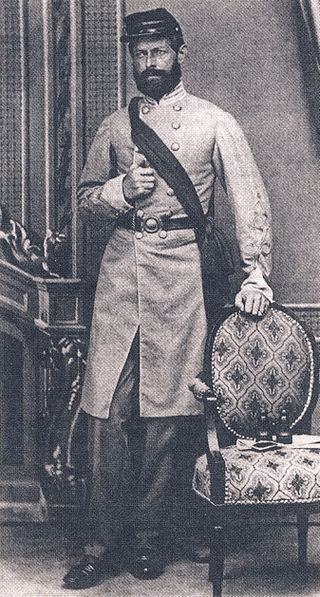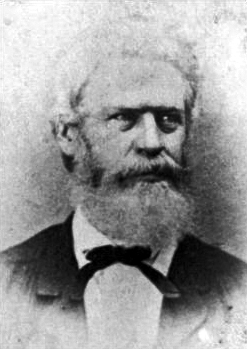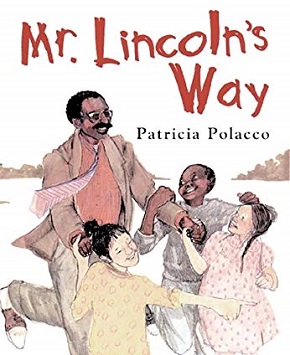
The Confederate States Army, also called the Confederate Army or the Southern Army, was the military land force of the Confederate States of America during the American Civil War (1861–1865), fighting against the United States forces to win the independence of the Southern states and uphold and expand the institution of slavery. On February 28, 1861, the Provisional Confederate Congress established a provisional volunteer army and gave control over military operations and authority for mustering state forces and volunteers to the newly chosen Confederate president, Jefferson Davis. Davis was a graduate of the U.S. Military Academy, and colonel of a volunteer regiment during the Mexican–American War. He had also been a United States senator from Mississippi and U.S. Secretary of War under President Franklin Pierce. On March 1, 1861, on behalf of the Confederate government, Davis assumed control of the military situation at Charleston, South Carolina, where South Carolina state militia besieged Fort Sumter in Charleston harbor, held by a small U.S. Army garrison. By March 1861, the Provisional Confederate Congress expanded the provisional forces and established a more permanent Confederate States Army.

Howell Cobb was an American and later Confederate political figure. A southern Democrat, Cobb was a five-term member of the United States House of Representatives and the speaker of the House from 1849 to 1851. He also served as the 40th governor of Georgia (1851–1853) and as a secretary of the treasury under President James Buchanan (1857–1860).

Henry Wirz was an American convicted war criminal who served as a Confederate Army officer during the American Civil War. He was the commandant of Andersonville Prison, a Confederate prisoner-of-war camp near Andersonville, Georgia, where nearly 13,000 Union Army prisoners of war died as result of inhumane conditions. After the war, Wirz was tried and executed for conspiracy and murder relating to his command of the camp. Since his execution, Wirz has become a controversial figure due to debate about his guilt and reputation, including criticism over his personal responsibility for Andersonville Prison's conditions and the quality of his post-war trial.

The Andersonville National Historic Site, located near Andersonville, Georgia, preserves the former Andersonville Prison, a Confederate prisoner-of-war camp during the final fourteen months of the American Civil War. Most of the site lies in southwestern Macon County, adjacent to the east side of the town of Andersonville. The site also contains the Andersonville National Cemetery and the National Prisoner of War Museum. The prison was created in February 1864 and served until April 1865.

The Lost Cause of the Confederacy is an American pseudohistorical and historical negationist myth that claims the cause of the Confederate States during the American Civil War was just, heroic, and not centered on slavery. First enunciated in 1866, it has continued to influence racism, gender roles, and religious attitudes in the Southern United States into the 21st century. Historians have dismantled many parts of the Lost Cause mythos.

Douglas Hancock Cooper was an American politician, soldier, Indian Agent in what is now Oklahoma, and Confederate general during the American Civil War.

James Chesnut Jr. was an American lawyer and politician, and a Confederate functionary.

Andersonville is a novel by MacKinlay Kantor concerning the Confederate prisoner of war camp Andersonville prison during the American Civil War (1861–1865). The novel was originally published in 1955, and won the Pulitzer Prize for Fiction the following year.
Patricia Barber Polacco is an American author and illustrator. Throughout her school years, Polacco struggled with reading but found relief by expressing herself through art. Polacco endured teasing and hid her disability until a school teacher recognized that she could not read and began to help her. Her book Thank You, Mr. Falker is Polacco's retelling of this encounter and its outcome. She also wrote such books as Mr. Lincoln's Way and The Lemonade Club.

Mississippi was the second southern state to declare its secession from the United States, doing so on January 9, 1861. It joined with six other southern states to form the Confederacy on February 4, 1861. Mississippi's location along the lengthy Mississippi River made it strategically important to both the Union and the Confederacy; dozens of battles were fought in the state as armies repeatedly clashed near key towns and transportation nodes.

The state of Iowa played a significant role during the American Civil War in providing food, supplies, troops and officers for the Union army.

John McElroy (1846–1929) was an American printer, soldier, journalist and author, known mainly for writing the novel The Red Acorn and the four-volume Andersonville: A Story of Rebel Military Prisons, based upon his lengthy confinement in the Confederate Andersonville prison camp during the American Civil War.
Alfred "Teen" Blackburn was one of the last surviving American slaves with a clear recollection of slavery as an adult. He was known throughout Yadkin County, North Carolina for his strength, size, and longevity. While enslaved, he served as a body servant for his owner, a Confederate soldier, during the Civil War. In 1929, state officials granted him a Class B pension in North Carolina, leading some to mistakenly describe him as a Confederate veteran.
Historiography examines how the past has been viewed or interpreted. Historiographic issues about the American Civil War include the name of the war, the origins or causes of the war, and President Abraham Lincoln's views and goals regarding slavery.

Dorence Atwater was a Union Army soldier and later a businessman and diplomat who served as the United States Consul to Tahiti.

Mr. Lincoln’s Way is a 2001 children’s book by Patricia Polacco. It was published by Philomel Books in New York, NY. This book deals with the issue of racism and can be used as a tool to introduce diversity and tolerance in a classroom setting. It tells the story of a principal of an elementary school, Mr. Lincoln, helping the school bully overcome his feelings of hatred. Polacco did all of the watercolor illustrations.

Slavery played the central role during the American Civil War. The primary catalyst for secession was slavery, especially Southern political leaders' resistance to attempts by Northern antislavery political forces to block the expansion of slavery into the western territories. Slave life went through great changes, as the South saw Union Armies take control of broad areas of land. During and before the war, enslaved people played an active role in their own emancipation, and thousands of enslaved people escaped from bondage during the war.

The "Twenty Negro Law", also known as the "Twenty Slave Law" and the "Twenty Nigger Law", was a piece of legislation enacted by the Confederate Congress during the American Civil War. The law specifically exempted from Confederate military service one white man for every twenty slaves owned on a Confederate plantation, or for two or more plantations within five miles of each other that collectively had twenty or more slaves. Passed as part of the Second Conscription Act in 1862, the law was a reaction to United States President Abraham Lincoln's preliminary Emancipation Proclamation, which was issued barely three weeks earlier. The law addressed Confederate fears of a slave rebellion due to so many white men being absent from home, as they were fighting in the Confederate Army. The Confederacy enacted the first conscription laws in United States history, and the percentage of Confederate soldiers who were conscripts was nearly double that of Union soldiers.

Between 1861 and 1865, American Civil War prison camps were operated by the Union and the Confederacy to detain over 400,000 captured soldiers. From the start of the Civil War through to 1863 a parole exchange system saw most prisoners of war swapped relatively quickly. However, from 1863 this broke down following the Confederacy's refusal to treat black and white Union prisoners equally, leading to soaring numbers held on both sides.

Mary Ann Harris Gay was an American writer and poet from Decatur, Georgia, known for her memoir Life in Dixie During the War (1897) about her life in Atlanta during the American Civil War. Author Margaret Mitchell said Gay's memoir inspired some passages in her novel Gone with the Wind (1936). Gay also published a book of poetry in 1858, which she republished after the war to raise money to help support her mother and sister.

















